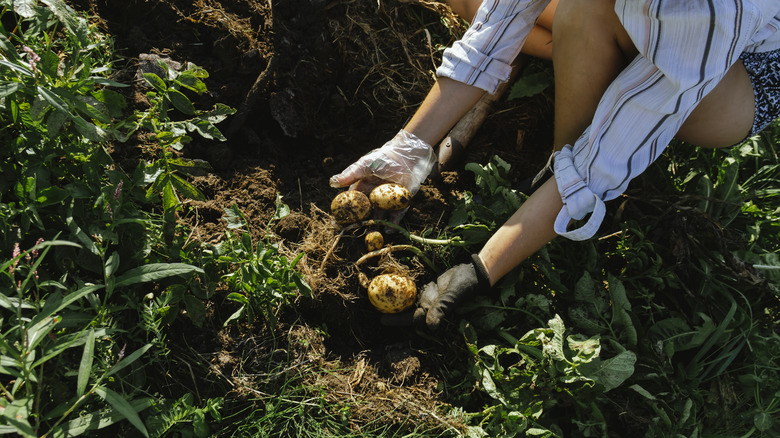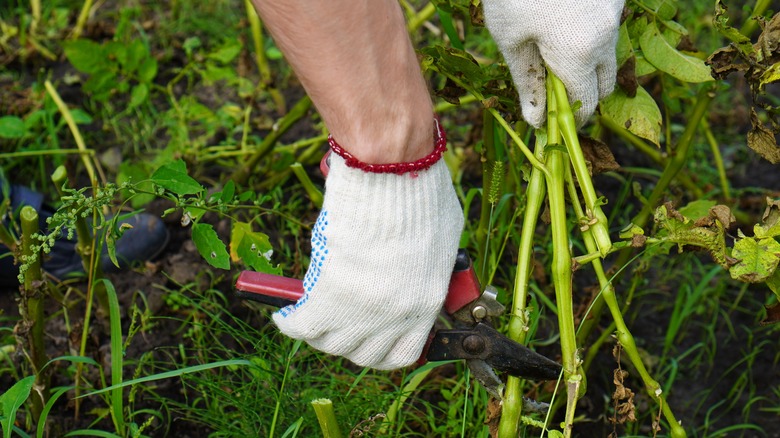The Trick To Try With Your Potato Plants After Harvesting To Produce A Second Crop
It's been months since you buried those seed potatoes in your garden bed. How to know when it's time to harvest new potatoes isn't always easy — they grow under the dirt, after all. You've spotted blooms on the plants and you're a hungry gardener, so you get digging and are rewarded with firm, thin-skinned tubers. But the harvest isn't as big as you hoped, given the long wait. You might be making a common mistake that's limiting your potato harvest. Some experts say that if you pull up the plant and spot tiny potatoes in the root system alongside big, edible ones, you're in luck. You can chop the top of the vine and replant it in another spot in your garden and get a second harvest.
Gently lift the entire root ball of your potato plant, tiny tubers attached, out of the soil. Hunt for sizable new potatoes — those are ready for the dinner table. Prune the plant hard, leaving about 6 inches of stem, and replant it in a large bucket, planter, or garden bed. Another option is to split a big plant up by separating out the young shoots from the parent plant, replanting those. Just make sure you spot those telltale teeny potatoes and that each sapling has some roots, or your efforts are unlikely to succeed. Don't be put off by a bit of initial wilting. The plants should recover in a few days to a few weeks. In fact, potatoes are so hardy they can even survive losing all their leaves — say, from storm damage — and bounce back. Cutting them to the ground is the key to regeneration.
Is harvesting new potatoes and replanting the plant even a good idea?
This helpful tip that will ensure a bountiful potato harvest only works if you eat early or new potatoes — tubers harvested within 50 or so days of sowing. They appear when the potato plant starts to flower. At this point, tuber maturity varies, and it's the very young, teeny tiny tubers that will go on to become your second harvest potatoes after replanting. In other words, you simply harvested potatoes before the plant matured. If you cut it back at this stage, it will continue to produce potatoes. If you're very patient, you'll end up with main crop potatoes, which are larger, have tougher skins, and can be stored for longer periods than their emergent counterparts.
However, not everyone agrees that this is a good idea. Some horticultural experts state pruning potatoes limits tuber growth, causing the plant to focus on growing leaves instead of sending energy to its below-soil crop. Though somewhat anecdotal, a member of the Food Garden Group in Tasmania, Australia, compared yields from pruned and unpruned crops back in 2016 and found the latter produced more and weightier potatoes. The standard advice is to wait until after the plant has finished flowering — which is when it starts sending energy to those hungry underground stems — and then dies back to harvest your potatoes. You can prune at this time if you wish, but the plant is most likely spent and won't produce another crop. Any forgotten spuds might, if you live in a warm climate, re-sprout come next spring, or, for those in frostier climes, they'll likely just rot.

